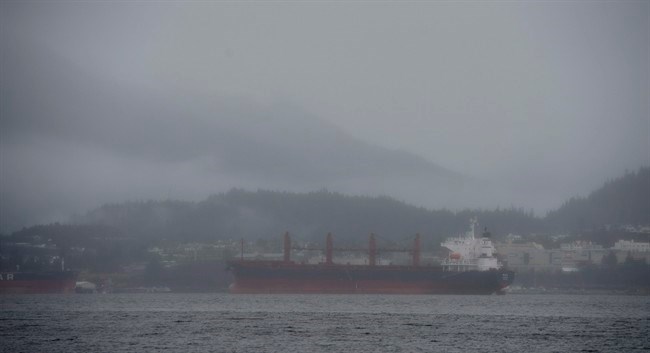 Assume Petronas decides it can live with the final version of B.C.’s liquefied natural gas tax regime and pushes the green light on its massive LNG plant near Prince Rupert.
Assume Petronas decides it can live with the final version of B.C.’s liquefied natural gas tax regime and pushes the green light on its massive LNG plant near Prince Rupert.
Construction would start on a four-year project to build two processing plants, an export facility and a 900-kilometre pipeline to northeast B.C. It would be an $11-billion build and bring 4,500 workers at the peak. It’s just one of seven such projects being contemplated in the area.
Is Prince Rupert ready for this?
The city’s chief financial officer, Corinne Bomben, briefed a committee of MLAs recently and the answer seems pretty clear. The place would be swamped.
Coping with a major pulse of activity after many years in the doldrums would put enormous pressure on a community that has been just making do with aging infrastructure for years. She said there are some gaps between what the city offers in services and what the proponents need.
She offered a quick run-through of the city’s infrastructure. The water comes from a 100-year-old dam piped through an equally old supply line. Every component of the system is past its expected life cycle and it would take $12 million to upgrade it.
The sewage system dates back to the early 1900s and discharges into the harbour with almost no treatment, a scenario familiar to Victorians. Ottawa is demanding a treatment plan and the early estimates are up to $150 million.
The city has four traffic bridges and three of them are wooden. “The bridges are on borrowed time,” she told MLAs. The majority of the roads are rated in poor condition, over half are more than 25 years old. Retaining walls are a common feature due to geography, and many no longer meet code requirements. Cost of an overall road upgrade is pegged at $85 million.
The landfill is maxing out and it will cost $7 million to expand it, which needs to be done in the next five years.
The potential LNG hyper-boom could create huge fly-in, fly-out construction traffic, even if only one or two projects go ahead.
The airport was built on Digby Island and the only access is a city-owned ferry. It runs to a single-lane steel ramp at the dock. The system was built in 1959 and now has a reduced weight limit due to its age and is in constant need of repair. The 12-car ferry needs an upgrade or replacement.
The cost of improving the air link is put at $25 million.
That’s $279 million in spending requirements on the near- to mid-term horizon to address deferred-maintenance challenges.
The total doesn’t include anything for housing, another principal concern in a town rife with renovictions.
An LNG plant would bring some tax revenue, but the city isn’t expecting a bonanza. Tax rates on port lands were capped in 2004 to guard against municipalities gouging industries.
Bomben told MLAs the tax regime is a challenge because the nature of the developments is that their assessable value declines.
“A capped taxation rate on a declining value results in a decreasing revenue stream to the city,” she said. And all the major industrial properties in Prince Rupert qualify for the cap. (Petronas’ proposal is outside of the city limits.) The B.C. government provides compensation grants to affected municipalities, but Bomben said it doesn’t make up the amount of subsidization by the remaining tax classes.
The result is that the tax burden shifts to residents and businesses. Since the population has declined by several thousand over the past 20 years, the burden is significant, she said.
LNG plants are not specifically covered by the now-permanent cap on port tax rates. But Natural Gas Minister Rich Coleman warned northern municipalities not to “go crazy” on industrial tax rates at last month’s Union of B.C. Municipalities convention and suggested to the Vancouver Sun some kind of limit on municipal taxes will be included in the upcoming LNG tax legislation.
Divvying up the tax take from prospective LNG plants is a balancing act that’s unlikely to leave all the host communities happy.



